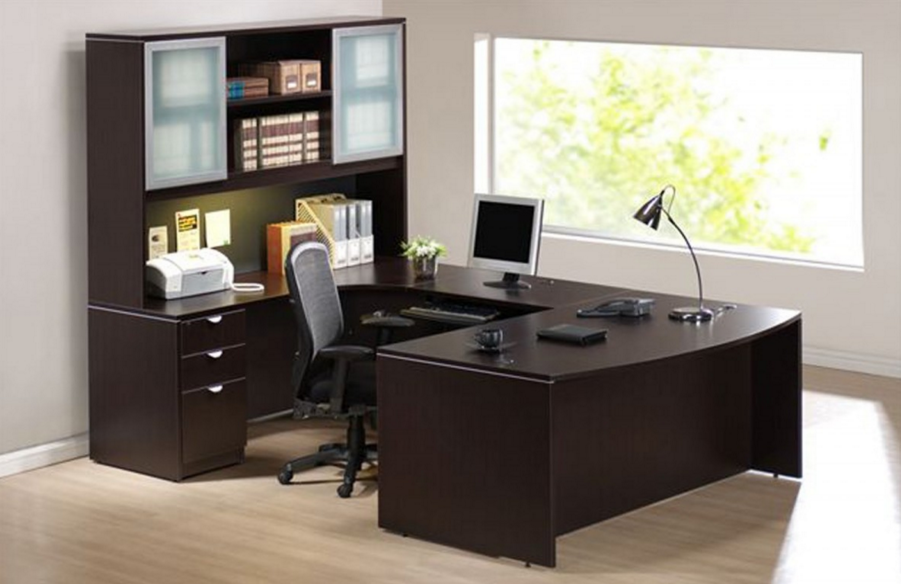
So, you finally have your very own office. No longer confined to a soul-crushing cubicle, you rejoice at the notion of setting up your own private workspace. Now, the question is will your new office be a well-organized place that facilitates business and creativity, or will your new work space merely be a more spacious version of your cluttered cubicle? It’s all up to you.
Office essentials
Small business experts at About.com provide a handy checklist of absolutely essential office items. Although they talk about what you need to set up a home office, the same principals apply to anyone thinking about putting together a more formal, not-at-home office space.
At the very least, you will require the following:
- Desk and chair
- Guest seating
- Computer and monitor
- Scanner-printer
- Desktop telephone
- Filing cabinet
- Storage cabinet
- Lighting
You may wish to incorporate these things into your office:
- Coffee station
- Document shredder
- Fax machine
- Wall-mounted television for sharing digital presentations
- Small refrigerator for beverages and snacks
Many of these things can be found at office supplies retailers. The way you arrange these items will contribute to the comfort of your office.
Form and function
Chances are good that you will spend the majority of your workday sitting at your desk. For this reason, it’s imperative that you ‘test drive’ any desk and chair combination you are considering, before you make a purchase.
Sit in the chair and lean back. Does it feel secure, or does it inspire a fear of falling over? Put your arms and hands in position as if you were using your computer keyboard. Is the desktop too high or too low? Can the chair be adjusted for height? If you’re not totally comfortable at your work desk, you probably won’t get as much done as you would if you worked at a very comfortable, ergonomic work station.
You can save a substantial amount of working capital if you purchase used office furniture in lieu of brand-new items. Scrounge resale stores and going-out-of-business sales. Estate sales sometimes offer an abundance of office-related furnishings for almost nothing. Don’t overlook furniture that is need of minor repair. Browse sites such as TableLegsOnline.com to find the stuff to make older furniture like new again.
Lighting and storage
Even a 21st-century office can make good use of a real filing cabinet. Hard copies of crucial documents such as contracts and receipts is a business must. For a small office situation, a two-drawer cabinet may be sufficient. If you intend to turn out a massive amount of work-related documents, a three- or four-drawer cabinet may suit your purposes perfectly.
Every office needs a space in which to store essential items such as reams of printing paper and office stationery, boxes of pens and pencils, staplers and staple removers, erasers, paper clips, stamps and envelopes, and so on.
Lighting is another office essential. Eschew garish fluorescent tube lighting if you can. The light cast by fluorescent bulbs is known to hinder human comfort and may actually impede progress in the workplace. Make sure your desk has a high-intensity lamp that illuminates your hands as you type but does not shine directly into your eyes.
Incorporate enough ambient lighting to make the room comfortable and useable even after dark. Ceiling-mounted track lighting adds excellent light and may be customized so you don’t have to shine every light bulb in the fixture at once.
Ergonomic arrangement
The quality of your furniture may not be as important as the way you place it throughout the room. Place the heaviest items away from the entry door, but do not shove every heavy thing against a wall. Place your desk in the middle of the room, or situate it with one side against a wall.
Situate your filing cabinet no more than a few steps away from your desk. Any further, and you may become apt to pile papers on your desk instead of organizing them right away. Place a wastebasket in the knee hole of your desk, and hide as much of your peripheral wiring as possible. If visible wires are unavoidable, corral them into tidy bundles with twist-ties.
Ensure good traffic flow through your office. No matter what size space you have, you’re bound to feel better if you can move easily through your workspace.
About the author: Tara Williams works for an office furniture fitting company in the office dealing with client enquiries and liaising with the outfitting team. She has built up an understanding of what does and doesn’t work to create a productive office environment and shares her ideas online.

IntelligentHQ Your New Business Network.
IntelligentHQ is a Business network and an expert source for finance, capital markets and intelligence for thousands of global business professionals, startups, and companies.
We exist at the point of intersection between technology, social media, finance and innovation.
IntelligentHQ leverages innovation and scale of social digital technology, analytics, news and distribution to create an unparalleled, full digital medium and social business network spectrum.
IntelligentHQ is working hard, to become a trusted, and indispensable source of business news and analytics, within financial services and its associated supply chains and ecosystems.






























